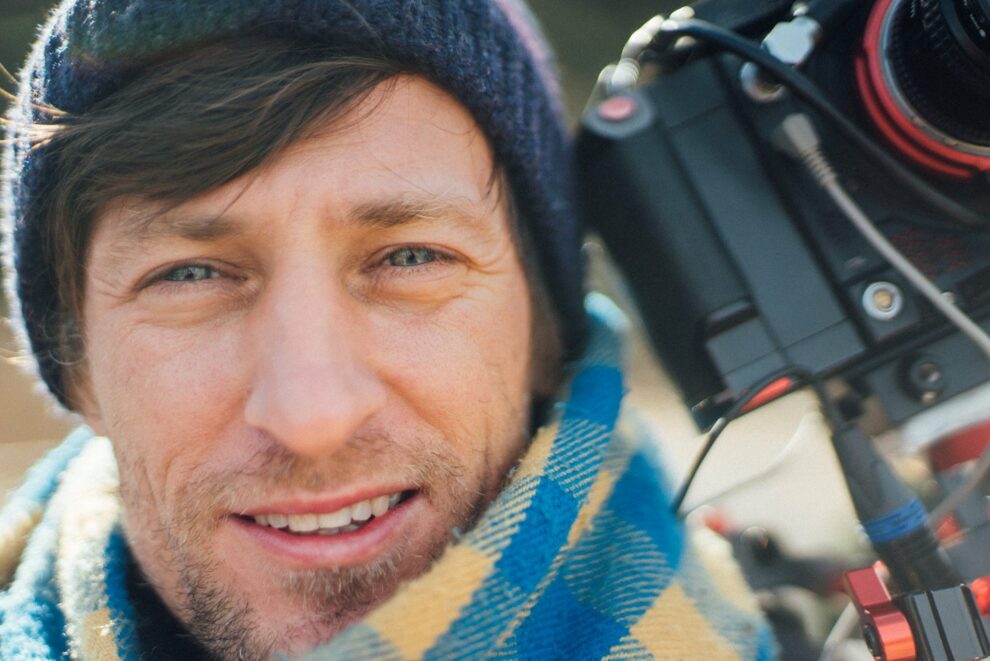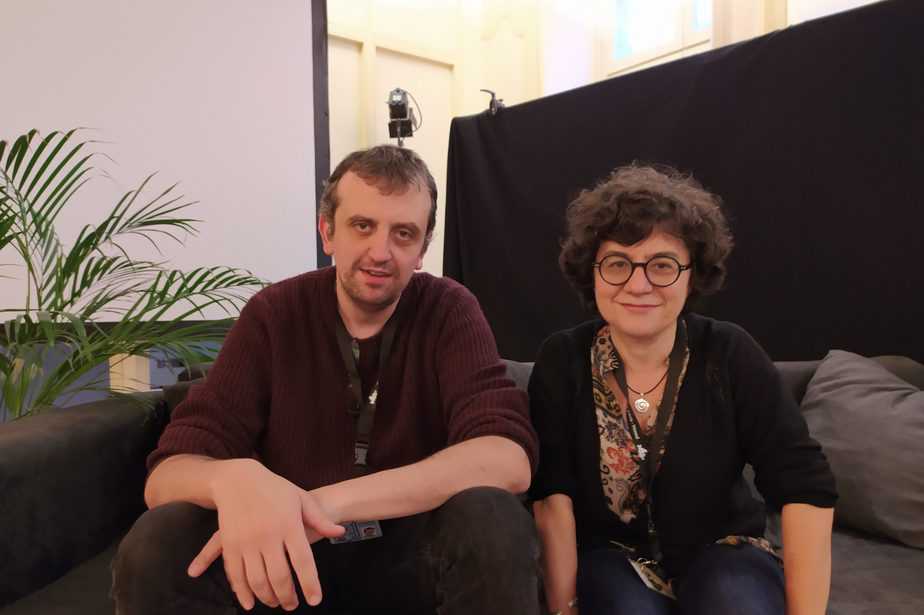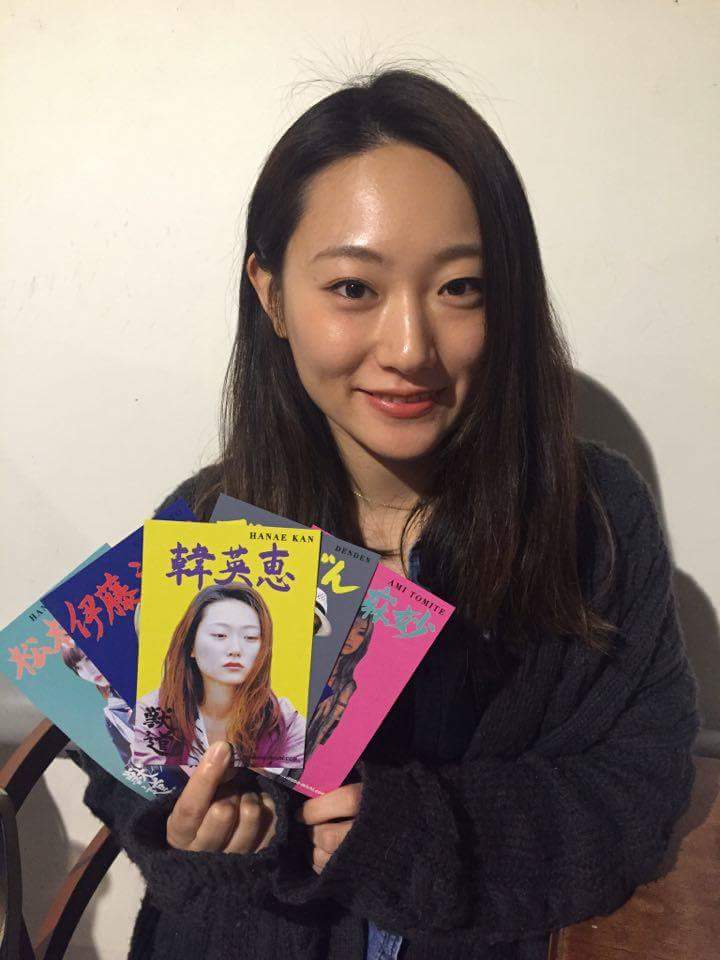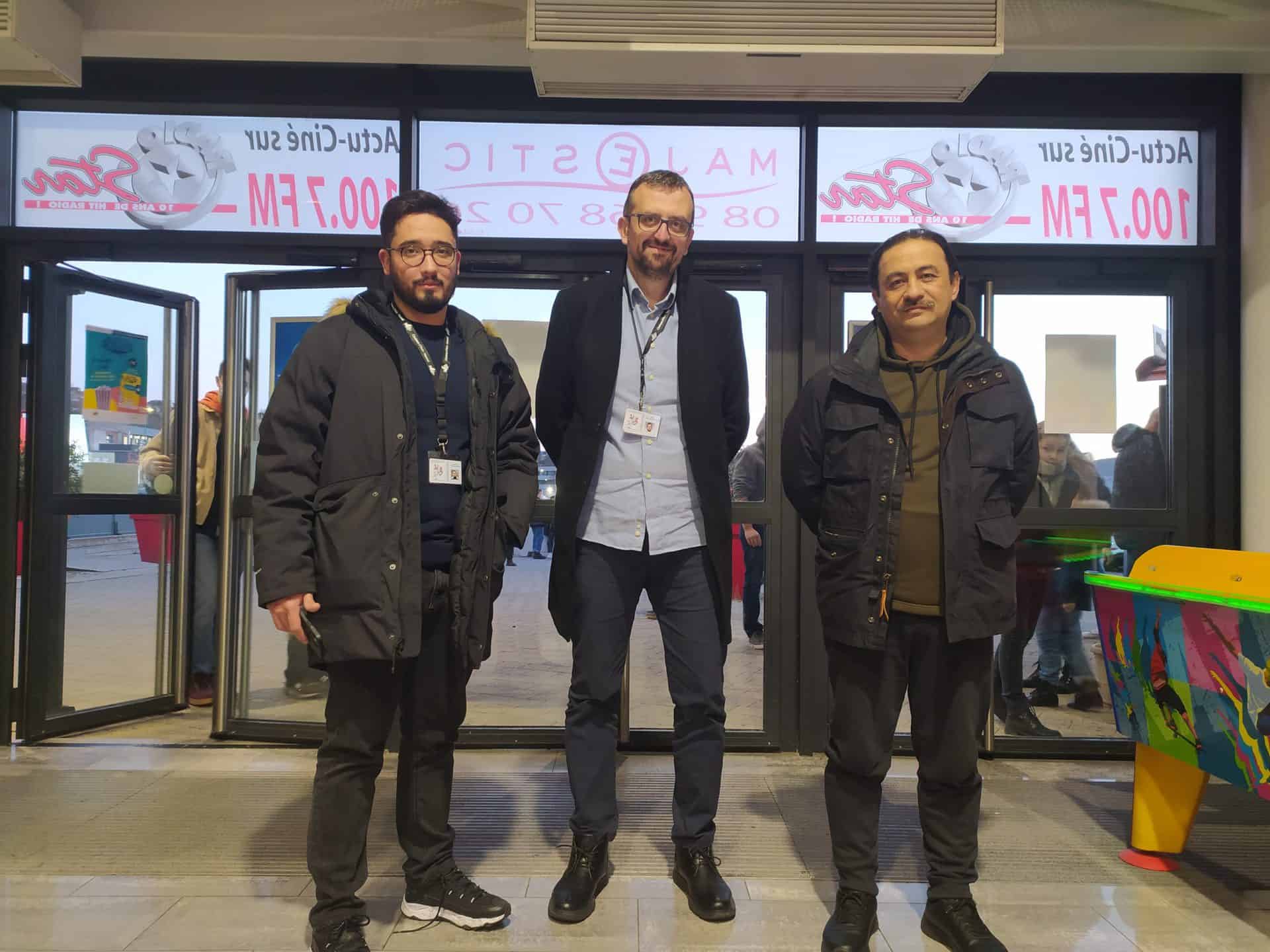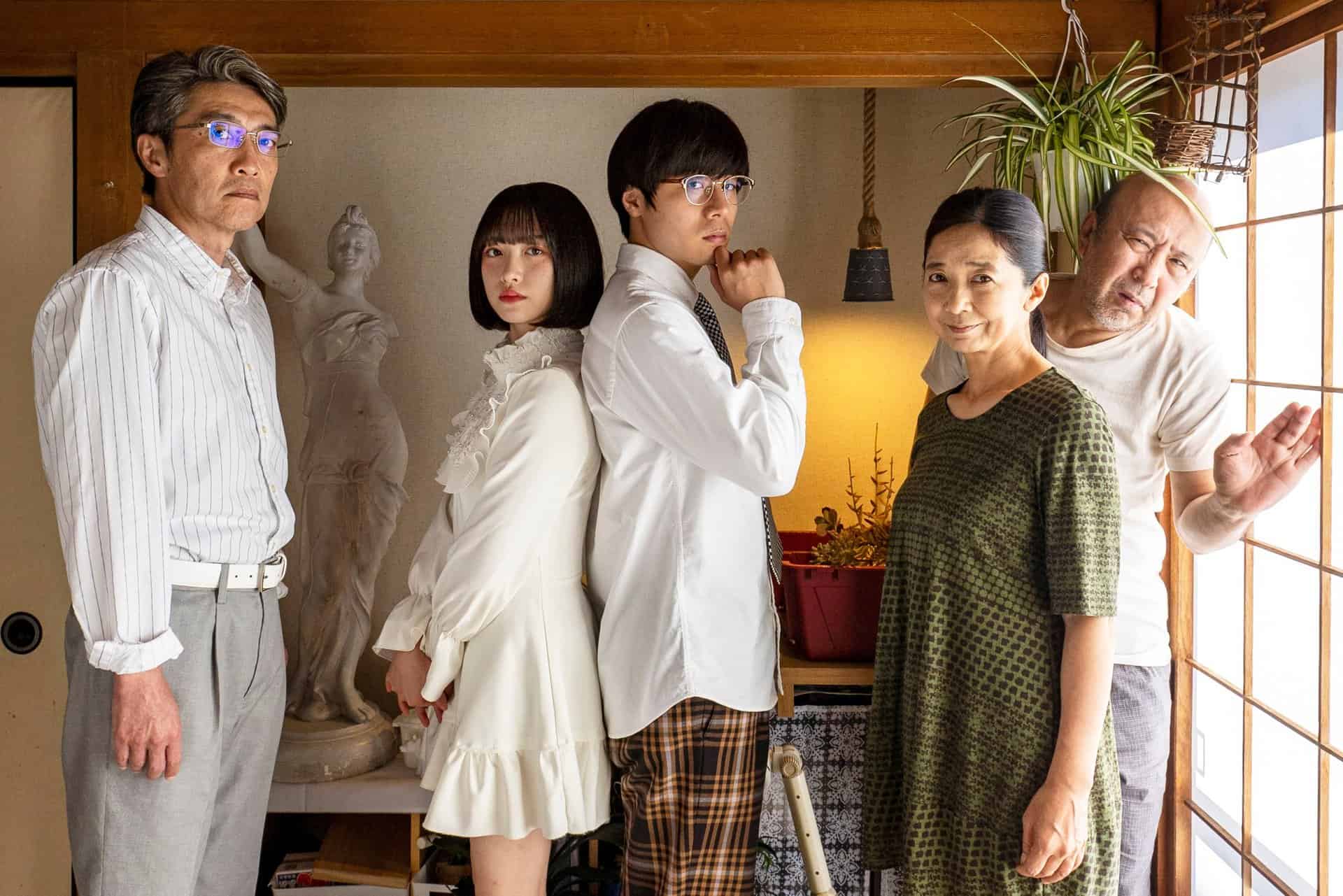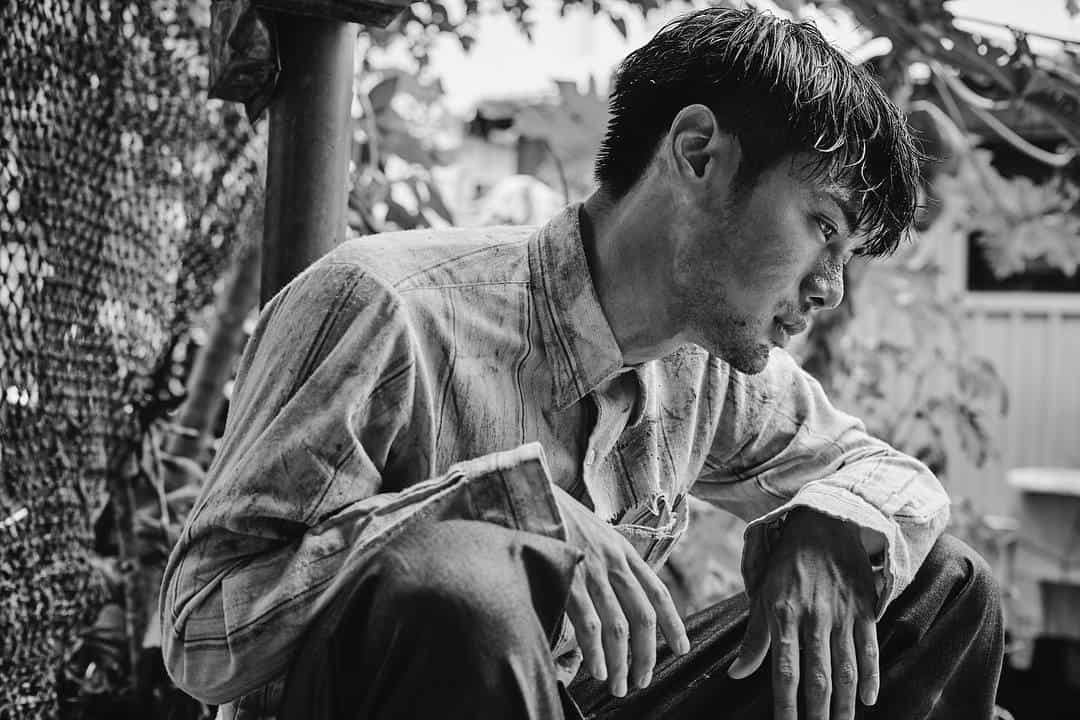Chris Rudz is a Polish cinematographer and director, currently based in Tokyo, with a number of commercials, music videos and documentaries under his belt. Having studied in Amsterdam and Kyoto, with experience working in multiple languages, his feature debut “All the Songs We Never Sang” is set on a small Japanese island within the world of ama female pearl divers. Blending comedy, coming-of-age drama and musical, it offers an introduction to the important cultural tradition, alongside some entertaining laughs.
Currently on the festival circuit in Japan, Europe and the US, Chris took some time out to discuss the project's initial inspiration, the challenges of shooting the important, and well-executed, underwater sequences, the input of the cast and the importance of working with an experienced team when working in a second language and below sea level.
I know this builds on a previous short film you made (“What to do to be like you”), what attracted to you to working on projects related to Ama?
Contrary to what might be assumed, the feature film was first. I was nearly ready for shooting when the Japan Film Commission offered me an opportunity to make a short film. Despite the tight timeline, with the feature film shoot set for early May and the short film deadline in mid-April, I saw this as a fortunate chance to progress the feature film. I used the short film as a practical trial, testing locations and working with the team I had planned for the feature. This process also led to discovering new locations and deepening our understanding of the local community, elements that greatly enriched the feature film.
Looking back, the short film project was a fortunate coincidence. It not only served as a valuable preparation for the feature film but also added authenticity and depth to the story. All things in my life seemed to align to make my film.
Is the location one you had in mind for the film, or did it require some scouting to find the right location?
The location for the film wasn't just a random choice. It was a culmination of years of thought and exploration. About three to four years before the film came into fruition, I embarked on a journey with my girlfriend to places where Ama-san still live. This initial trip was more about curiosity and gathering insights for the script. I conducted interviews and kept an eye out for potential filming locations, considering the constraints of our budget. I specifically looked for locations that were not only visually appealing but also practical for shooting, with a focus on ease of access and proximity to each other. The goal was to find multiple suitable spots within a single town to avoid scattering locations too far apart. During the pre-production stage, I returned to these selected locations with the crew or technical scouting. This time, our approach was more focused, knowing exactly what we needed and exploring lighting solutions and other technical aspects.
Check the review of the film
How challenging were the underwater scenes to film and did you have any difficulties in getting the shots you wanted?
Filming the underwater scenes was indeed a challenge, but surprisingly, it went smoother than expected. We faced a range of complexities, from technical issues to underwater communication barriers, and natural factors like sea weather, visibility, and lighting. However, our success in these scenes can be largely attributed to the expertise of our underwater crew from Tail, who specialize in underwater filming and photography. The most significant challenge we encountered was the time we had to shoot. We were racing against the clock, and communicating effectively with the underwater crew, under such pressure, was not always easy. This was crucial, as I had very specific visual goals for these scenes and wanted to capture them as accurately as possible. We allocated two days for shooting underwater scenes. The Mie Prefecture in April with Ama-San, and in May, at Izu prefecture where we used body doubles for some deep diving shots.
The character of Shijo grows as the film develops. How did his character come about and how much license did you give to Kai Hoshino Sandy to improvise within the role?
Shijo's character development in the film is deeply intertwined with Kai Hoshino Sandy's contribution, both as an actor and a friend. From the outset, Kai was heavily involved, offering valuable feedback and insights, particularly regarding cultural nuances and dialogue. We spent about six months before filming discussing and shaping Shijo's character, incorporating elements like music preferences and even engaging in jam sessions where Kai would freestyle rap, adding depth to Shijo. Kai's versatility as an actor, balancing drama and comedy, greatly influenced the portrayal of Shijo. I allowed him considerable freedom in his performance, though at times I had to guide him to prevent overacting.
His natural flair for comedy brought a unique dynamic to Shijo, making the character relatable yet comically poignant at times. Ultimately, Shijo was envisioned as a character with layers of naivety and pretence, trying to appear cool but often coming off as comical. Kai's understanding of this complexity and his ability to bring it to life were instrumental in making Shijo a memorable and multidimensional character
How did Pierre Taki become involved in the project, and what was it like working with someone who has starred in some international hits?
We managed to bring Pierre on board through the great efforts of one of my producers David Dicembre and one of the team members of DMBZ – Mayumi Kuriyama, who had connections in the music industry. After sending him the treatment and a script, he showed great interest and commitment to the character of Sergeant Tsutomu. Our first meeting was on set, but his influence began much earlier. He even contributed to the creative process, suggesting changes to his police uniform costume to be more in tune with his character.
Collaborating with Pierre was not just professionally rewarding, but also one of the highlights of the film. His ability to create a character of such depth and presence, even with minimalistic acting, stands out distinctly. Pierre's portrayal brought a unique dimension to the film, one that I believe strongly resonates with the audience. His presence on screen is palpable, making his character one of the most impactful elements of the story.
Check also this interview
I believe this is your feature debut. How was the experience of making this film for you, particularly while working in a second language?
As someone who's been directing commercials, music videos, and documentaries, I'm pretty comfortable with the production and pre-production sides of things. But diving into my first feature film, I realized there's a whole other side to it, especially when it comes to thinking ahead about selling and distributing the film. Working in Japanese was an interesting twist, but luckily, I had Kai Sandy and the great producers to help me navigate the nuances. I've tackled projects in languages I don't speak before, so it wasn't completely unfamiliar territory. It just highlighted the importance of either really getting the language or having someone who can help make sense of it all.
At the end, it is about whether the scene feels right. The production support experience was definitely a learning curve. I collaborated with some great people, but we were all kind of learning on the go. It showed me the importance of having a team with deep industry knowledge for future projects.
I know the film has played in Warsaw, but what do you see next for the film, and yourself, in 2024?
Currently, the film is making its rounds in the festival circuit, having recently premiered at the Bushwick Film Festival in New York. My goal for 2024 is to get it featured in Japanese festivals, considering the film was made there. It would be fantastic to find distribution in Japan and see our film on popular streaming platforms like Netflix, Disney+, or Amazon Prime. The aim is to reach a wide audience in Japan, where the story and setting of the film resonate the most. The reaction of the Japanese audience at the festivals we visited was overwhelmingly positive; that gives me hope that the Japanese audience will truly enjoy this film.
As for my personal plans, I would like to continue with other projects, including a drama series, a documentary, and more feature films. I'm currently working on treatments for a drama series and another feature film with the goal of pitching it to a few great producers I've met on the way with my film. I hope to bring these ideas to life.


